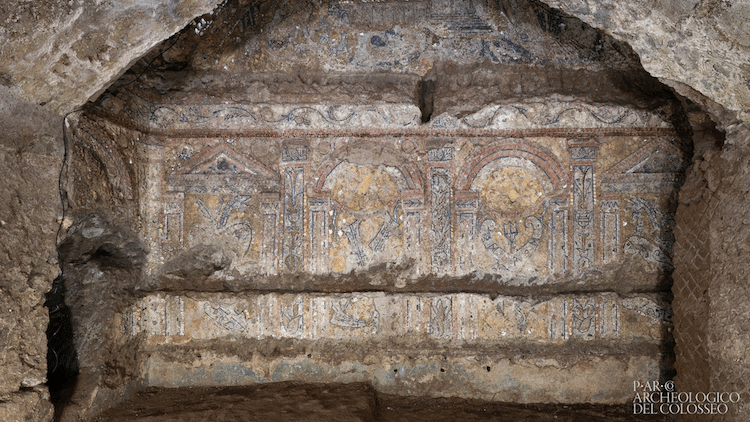
The elite of Ancient Rome lived lives of luxury and grandeur, enshrined with their families and servants in magnificent villas bedecked in luscious marble. It is these well-built, expansive homes which often appear thousands of years later in the archeological record. Uncovered on purposeful digs and even under city streets, the remains of these homes tell us a lot about their inhabitants and the time period in which they lived. A newly discovered “domus,” or townhome, in Colosseum Archeological Park in Rome has added to this rich history. It features a unique mosaic constructed of seashells, glass, and rich blue tiles, creating a delightful naval tableau.
The domus was built in the first or second century BCE during the Republican period of Roman history. It is located near the Palatine Hill and the Vicus Tuscus, an important commercial road. The domus has an atrium—an open columned area where inhabitants could get fresh air and which often contained pools and fountains. It was inside a specus aestivus—a type of vaulted room off the atrium where one could entertain—that the mosaic was discovered. Rising under the arched ceiling is the mosaic, which features its won depicted arches.
The mosaic is not merely made of pretty stone shards like many others. Instead, it includes iridescent glass, stunning blue Egyptian tiles, and tesserae of white marble. Seashells are interspersed throughout as design elements, and they are remarkably well-preserved. This is fitting, as the themes of the mosaic are heavily nautical. Two crossed, arching bows of boats frame a trident outlined in blue. There is a seaside scene and ships glide over stone waters. Shepherds in the fields, weapons for war, and even lotus flowers appear. This leads researchers to believe the owner may have had a military past.
While excavations continue on the domus, another room has yielded a beautiful fresco. The building is decorated in the Asia Luxuria-style, which was popular as the Roman elite conspicuously consumed after conquests by the empire in the east. “The archaeological excavation will conclude in the first months of 2024, and we will subsequently work intensely to make this place—among the most evocative of Ancient Rome—accessible to the public as soon as possible,” said Colosseum Archeological Park Director Alfonsina Russo. Rome is already full of incredible ancient sites, but this is one more to add to your travel must-see list.
A gorgeous mosaic made of tesserae and seashells forming horns and ships has been discovered in an ancient Roman home along the Vicus Tuscus, a thoroughfare of the ancient city.


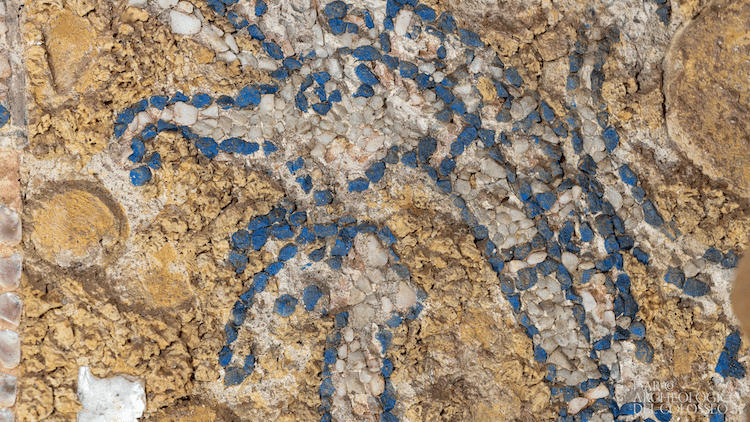
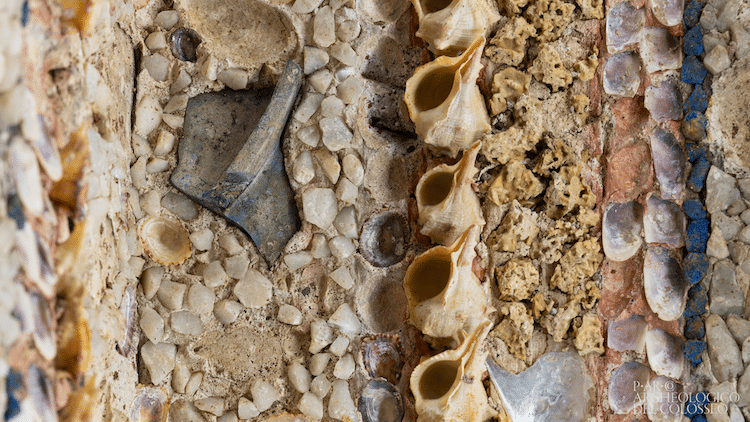
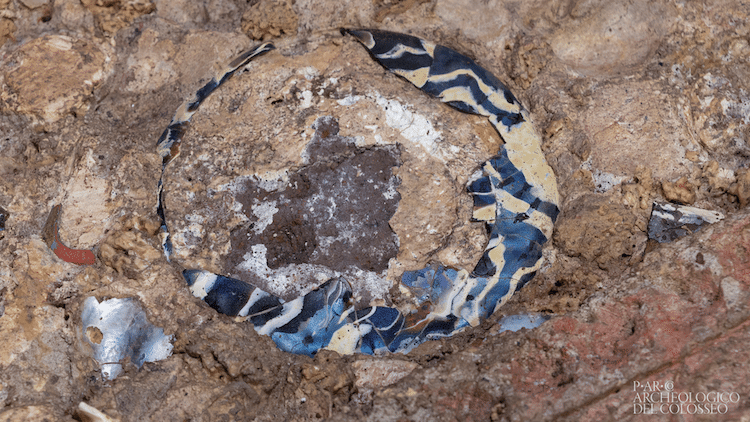
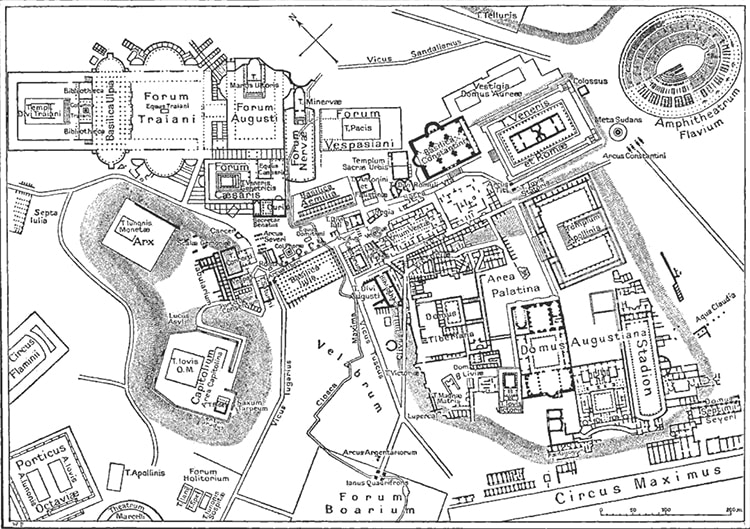
A map of ancient Rome with Vicus Tuscus at the center. (Photo: Wikimedia Commons, Public domain)
h/t: [Hyperallergic, Wanted in Rome]
Related Articles:
7 Contemporary Mosaic Artists Keeping the Ancient Art Form Alive
Largest-Ever Roman Mosaic Discovered in Anatolia Turns Out to Be Even Bigger Than Expected
Archeologist Spends Over 35 Years Building Enormous Scale Model of Ancient Rome
Explore the Grandeur of Hadrian’s Villa, a Lavish Palace Fit for a Roman Emperor
